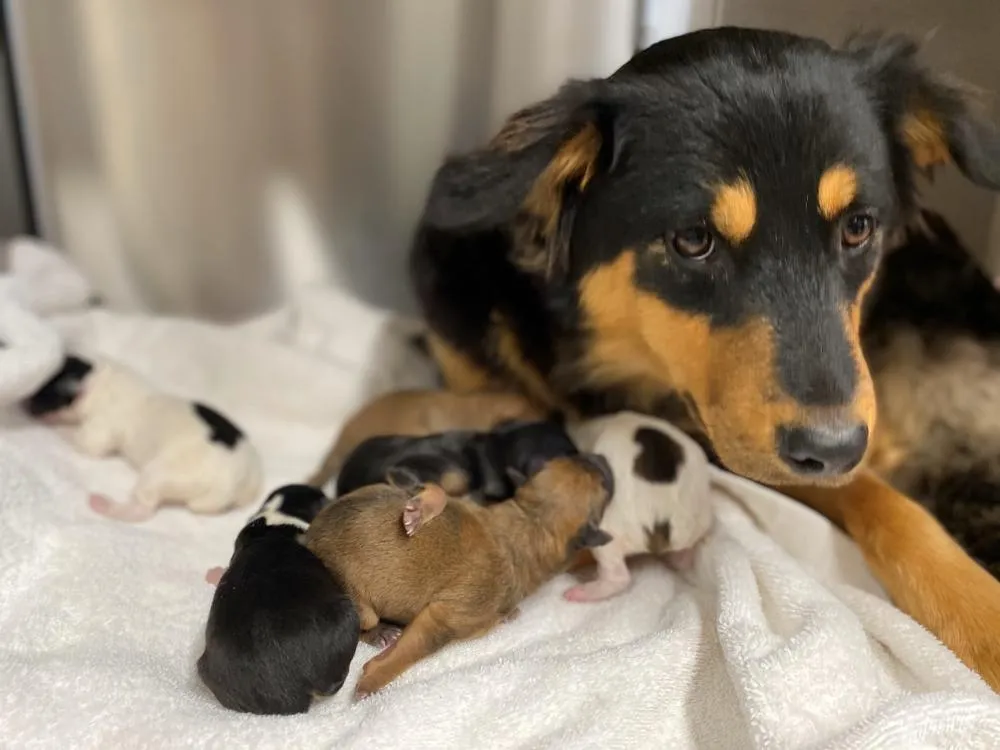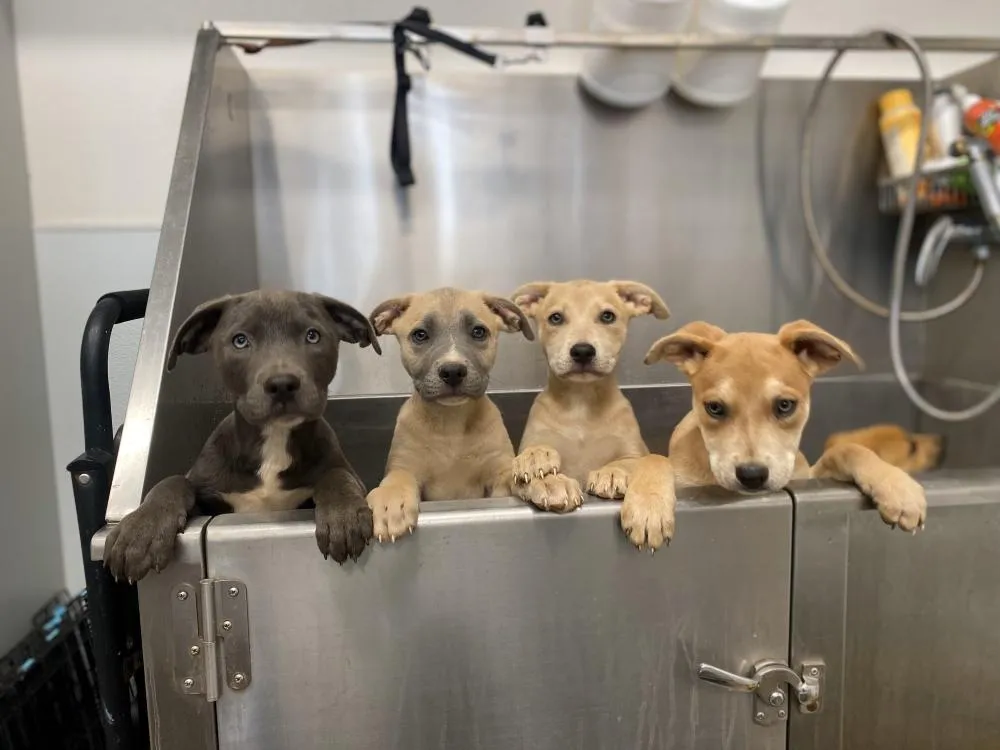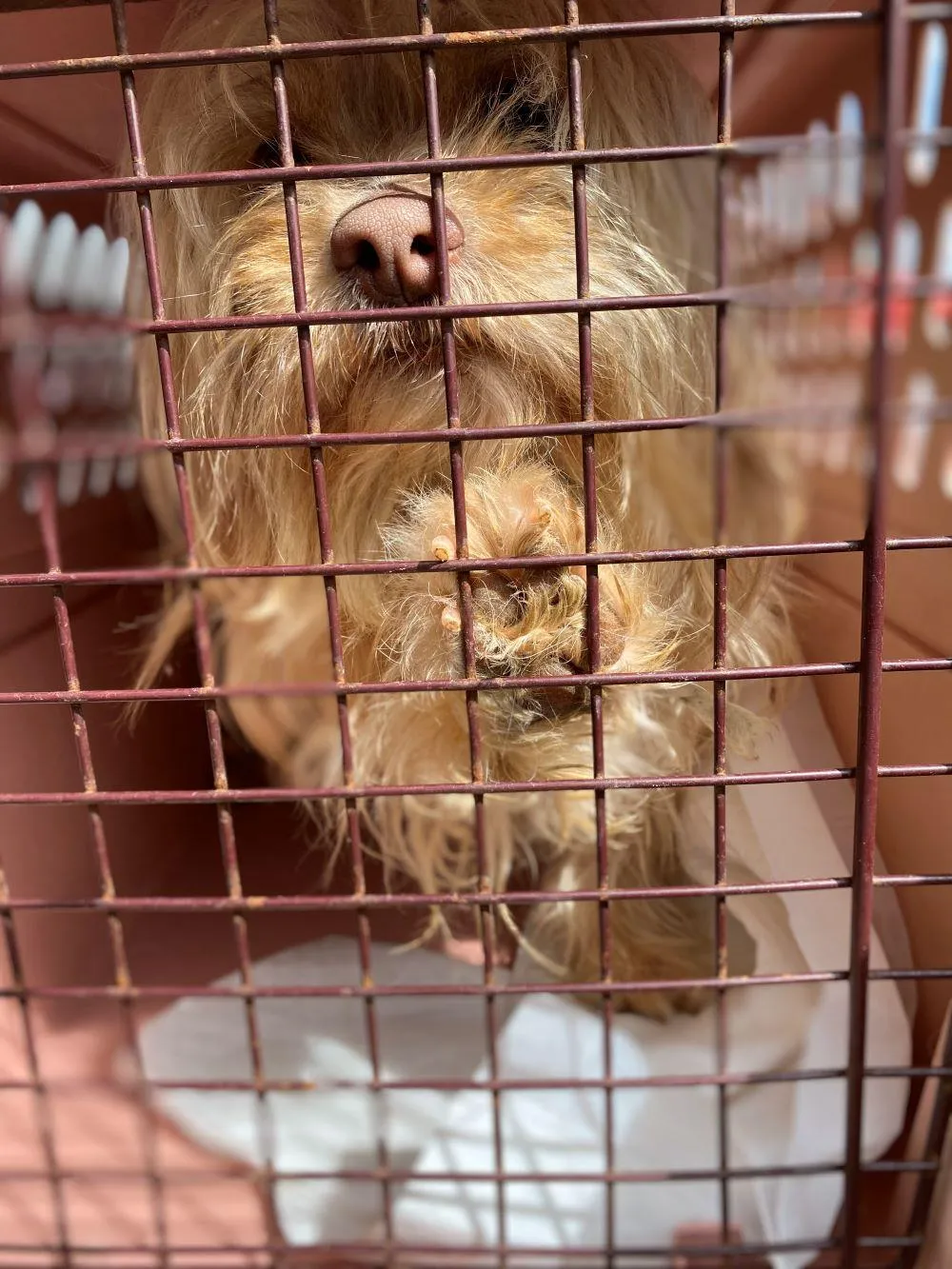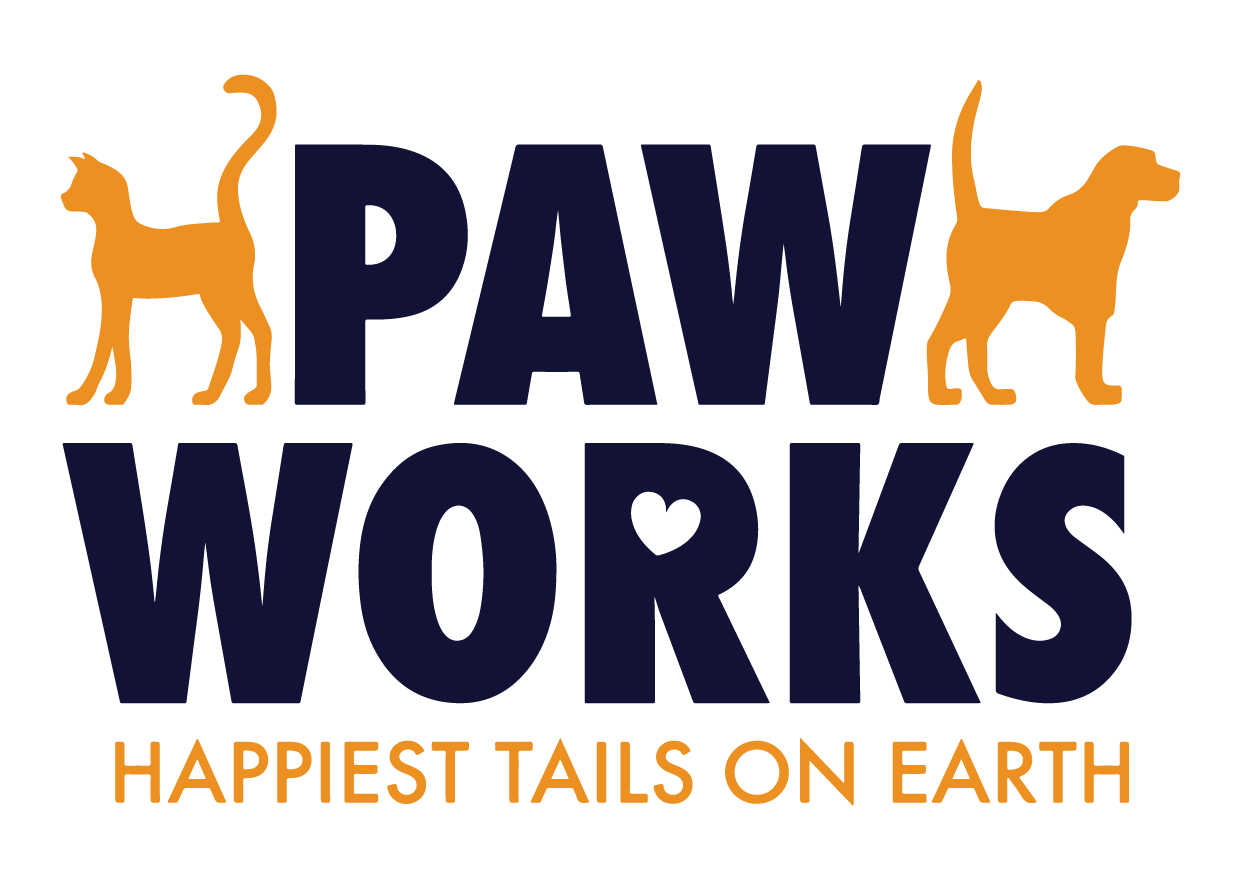Education is the First Step
Animal overpopulation is a BIG problem. How big? Every 13 seconds, a healthy, adoptable dog or cat is euthanized in a U.S. shelter, according to the Humane Society of the United States (www.hsus.org).
Pet overpopulation has severe social, ethical and financial implications and is particularly tragic because it is preventable. Paw Works is working hard to address this crisis, one pet at a time.
In total, almost 3 million pets are put down in shelters every year, and about 80 percent of them are healthy and could have been adopted into new homes, according to the Humane Society of the United States (www.hsus.org).

The Creation of a National Crisis
There clearly are not enough homes for the number of cats and dogs born each year, and too many of them will die in shelters. About 7.6 million unwanted pets enter U.S. animal shelters every year, and about 2.7 million of them are euthanized—roughly 31 percent of dogs and 41 percent of cats, according to the American Society for the Prevention of Cruelty to Animals (www.aspca.org).
At Paw Works, our ultimate goal is to end animal overpopulation and abandonment through education and community programs focusing on pet sterilization, veterinary care and training.
By promoting responsible pet ownership and by offering free spaying, neutering, vaccines and microchipping for low-income pet owners, we hope to overcome some of the obstacles that contribute to this growing problem.
Check out the rescued dogs and cats waiting for their new homes at Paw Works locations in Thousand Oaks and Ventura.
Fostering is a rewarding way to help an abandoned pet transition into his or her “furever” home.
Paw Works relies on volunteers to help in our pet adoption stores on a regular basis. However, we also appreciate volunteers who can donate time to help out at weekend pet adoptions and other events throughout the communities we serve.
It’s an Ethical Issue
Cats and dogs are our pets, yet frequently they are treated as disposable commodities. They are dependent on us for survival, and we have a responsibility for their welfare, yet millions of them suffer due to irresponsible pet ownership.
All too often, family pets are surrendered because they are ill or old, or no longer suit the needs of their owners, or because caring for them has become inconvenient or expensive. According to the Humane Society of the United States, “moving” and “landlord issues” are among the top reasons why pet owners give up their dogs and cats.
Unrealistic expectations and poor understanding of normal pet behavior, training and socialization also contribute to the high number of owner surrenders. Better education about the responsibility of pet ownership is imperative.

It’s a Health Issue
Simply put, sterilized pets are healthier pets. Neutering male cats and dogs eliminates the risk of testicular cancer and reduces the incidence of prostate cancer. In females, spaying can reduce or eliminate the chance of ovarian, uterine and mammary cancer, as well as life-threatening uterine infections. Fixing your pet can decrease howling, spraying, mounting, fighting, biting, aggressive behavior and the urge to roam. Statistically, pets who are spayed or neutered live longer than those who are not. The needless euthanization of healthy, adoptable pets is a true tragedy, and spaying or neutering should be standard practice for pet owners. These are more than just surgeries, they are solutions to a bigger problem.




It’s a Financial Issue
Crowded animal shelters not only add to the suffering of innocent animals, they present a heavy economic burden to taxpayers. Sources estimate that between 6 and 8 million dogs and cats enter the shelter system every year, and according to USA Today, “it costs U.S. taxpayers approximately $2 billion each year to round up, house, kill and dispose of homeless animals.
”And these costs continue to rise. Estimated costs to operate eight animal shelters in Ventura County were more than $2.6 million for the 2015-2016 fiscal year, about $600,000 higher than the previous year’s estimate (Ventura County Star).
Aside from the national and local economic burden of overpopulation, the personal expense for a pet owner over the pet’s lifetime can be reduced if a pet is spayed or neutered, and the cost of a pregnant female and her litter can be much higher than the cost of spaying her.
We ALL Pay for Pet Overpopulation
In 2016, taxpayers will fund more than $2.5 million for animal services. The projected costs for the eight cities that contract with Ventura County Animal Services are:
Camarillo $301,000
Fillmore $82,500
Moorpark $12,400
Ojai $49,200
Oxnard $1,623,600
Port Hueneme $138,400
Simi Valley $199,000
Ventura $264,700
Source: Ventura County Star
Note: Santa Paula and Thousand Oaks contract through other programs.
How You Can Help
- Spay and Neuter Your Pets
- Adopt from Paw Works
- Spread the Word
- Sponsor Our Efforts
- Spay and Neuter Your Pets
- Adopt from Paw Works
- Spread the Word
- Sponsor Our Efforts
Fast Facts
Of all the puppies and kittens born each day, only 1 in 5 stay in their original homes for their natural lifetimes. The remaining 4 are abandoned to the streets or end up at a shelter
(www.hsus.org).
If 1 in every 5 Americans who wanted a cat or dog in the next year adopted from a rescue or shelter, not a single adoptable cat or dog would lose its life in a shelter (www.hsus.org).
Tax ID #46-4484336
Paw Works, Inc. © 2025 | All Rights Reserved | Website managed by the animal-loving folks at iMPRESSTech.
Tax ID #46-4484336





